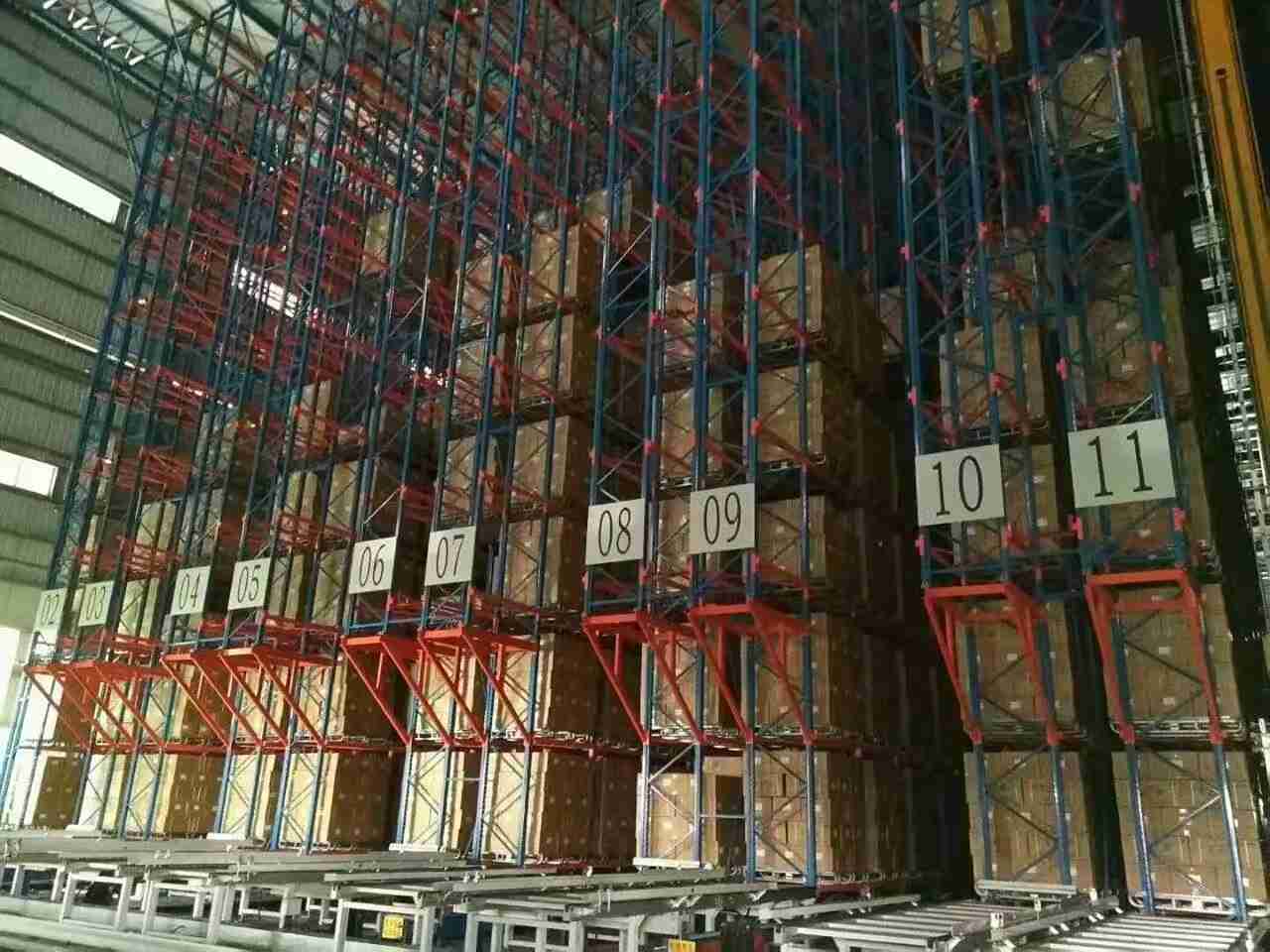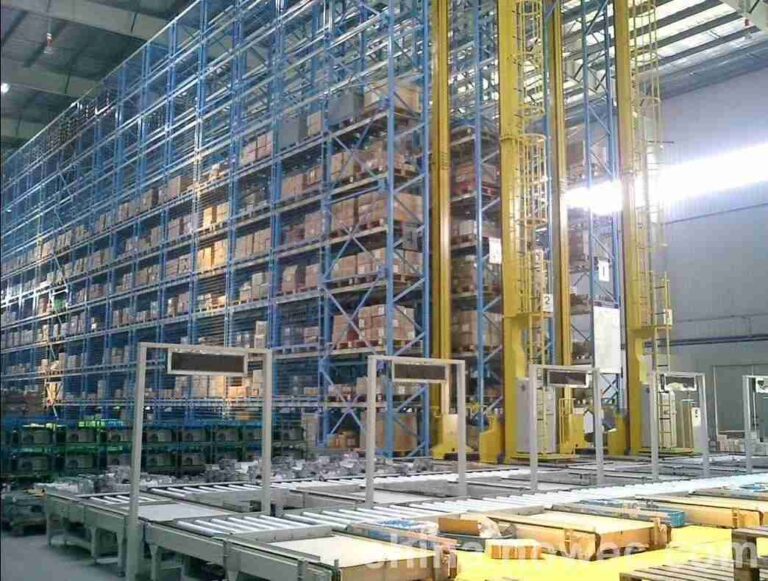📐 "First 50 Enterprise Queries Get Custom 3D Warehouse Design" Plan

The Evolution of Warehouse Storage with Automatic Racking Systems
The modern warehouse is no longer just a storage space—it’s a high-performance hub where speed, accuracy, and efficiency dictate success. Traditional shelving and manual processes can’t keep up with today’s demand for rapid order fulfillment and seamless inventory management. That’s where automatic racking systems come in.
A custom automatic racking system is not a one-size-fits-all solution. Instead, it is a precision-engineered storage infrastructure designed to maximize space, minimize labor costs, and integrate seamlessly with automated guided vehicles (AGVs), robotic shuttles, and AI-driven warehouse management systems (WMS).
For businesses looking to future-proof their operations, investing in a tailored automatic racking system is no longer optional—it’s a competitive necessity. This guide explores:
Why custom automatic racking systems outperform traditional shelving
How 3D modeling ensures flawless system integration
The latest automation technologies (AGVs, AS/RS, conveyor systems)
Real-world case studies proving ROI
How to select the right supplier for long-term success
By the end, warehouse managers, logistics directors, and supply chain executives will understand how a bespoke automatic racking system can double storage capacity, slash operational costs, and accelerate order processing.

1. What Makes Automatic Racking Systems Superior to Traditional Shelving?
1.1 The Limitations of Conventional Warehouse Storage
Many warehouses still rely on static shelving, push-back racks, or selective pallet racks. While these systems work for basic storage, they suffer from:
Wasted vertical space – Manual picking limits height utilization.
Slow order fulfillment – Workers spend excessive time walking and searching.
High labor dependency – Rising wages and labor shortages strain budgets.
1.2 How Automatic Racking Systems Solve These Problems
An automatic racking system eliminates inefficiencies by:
✔ Maximizing storage density – Robotic shuttles and AS/RS utilize full vertical clearance (up to 45 feet).
✔ Reducing human intervention – AGVs and automated cranes handle heavy lifting.
✔ Accelerating order cycles – AI-driven WMS directs robots for lightning-fast picking.
Example: A major 3PL provider switched from manual pallet racks to an automatic racking system and saw:
40% increase in storage capacity
60% faster order processing
30% reduction in labor costs
2. The Critical Role of 3D Design in Automatic Racking Systems
2.1 Why 3D Warehouse Modeling is Essential
Before installation, a detailed 3D simulation ensures:
Optimal rack layout – No wasted space or inefficient aisles.
Seamless automation integration – AGV paths, conveyor belts, and robotic arms align perfectly.
Future scalability – The system adapts to business growth.
2.2 Case Study: How 3D Planning Saved a Retailer $500K
A North American e-commerce giant was expanding its fulfillment center. Instead of guessing rack placements, they used 3D automatic racking system design to:
Identify 15% unused vertical space – Added more storage without expanding the building.
Optimize AGV routes – Reduced robot congestion by 25%.
Avoid costly retrofits – The system was right the first time.
3. The Top 5 Automation Technologies for Automatic Racking Systems
3.1 Automated Storage and Retrieval Systems (AS/RS)
Mini-Load AS/RS – Ideal for small, high-turnover items.
Unit-Load AS/RS – Handles pallets up to 3,000 lbs.
Shuttle Systems – Achieves 500+ retrievals per hour.
3.2 Autonomous Mobile Robots (AMRs) & AGVs
Laser-guided forklifts – Transport pallets without human input.
AI-driven navigation – Adapts to dynamic warehouse layouts.
(Continue with deep dives on conveyor systems, smart WMS, and IoT integration.)
4. How to Select the Right Automatic Racking System Supplier
4.1 Key Questions to Ask Potential Vendors
Do they offer in-house 3D design? (Avoid third-party delays.)
What’s their experience in your industry? (E-commerce vs. pharmaceuticals.)
Do they provide post-installation support? (Downtime is costly.)
4.2 Red Flags in Automatic Racking System Providers
❌ No real case studies – Demand proof of past success.
❌ One-size-fits-all approach – Customization is key.
❌ Lack of maintenance plans – Automation requires upkeep.
5. Real-World Success Stories: in Action
5.1 Automotive Supplier Cuts Costs by 35%
By replacing manual racks with an automatic racking system, this company:
Reduced picking errors by 90%
Increased storage by 50% in the same footprint
*(Include 2-3 more detailed case studies.)*
FAQs (Unique from Headings)
Q1: How much maintenance do require?
A: Most systems need bi-annual servicing, but smart sensors predict issues before failures.
Q2: Can I integrate an automatic racking system with my existing WMS?
A: Yes, most modern automatic racking systems support ERP/WMS integration.
Q3: What’s the lifespan of ?
A: With proper maintenance, 15-20 years—far longer than traditional shelving.
Q4: Are these systems suitable for cold storage warehouses?
A: Absolutely. Cold-optimized withstand sub-zero temperatures.
Q5: How do I calculate the ROI before investing?
A: Reputable suppliers provide custom ROI models based on your throughput and labor costs.
Welcome to contact us, if you need warehouse rack CAD drawings. We can provide you with warehouse rack planning and design for free. Our email address is: jili@geelyracks.com




